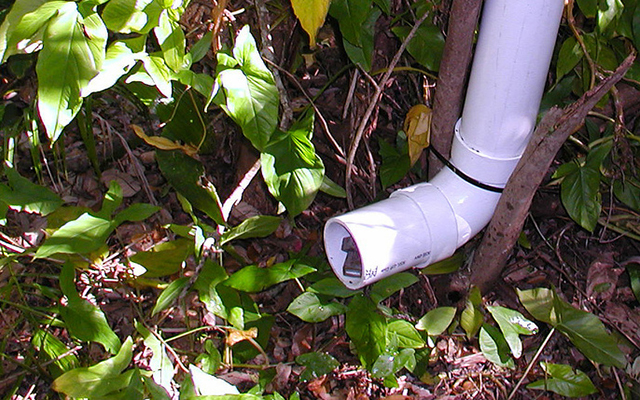
AUGUSTA, Maine — Wildlife Services, a program within the U.S. Department of Agriculture’s Animal and Plant Health Inspection Service, will distribute oral rabies vaccine (ORV) baits approximately Aug. 3 through Aug. 7 in northeastern Maine.

A rabies vaccine sachet, left, coated with fishmeal, and a fishmeal cube containing the vaccine, with a quarter for perspective. (Contributed photo/U.S. Department of Agriculture)
The distribution campaign, an annual event since 2003, is part of ongoing, cooperative rabies control efforts aimed at reducing the incidence of raccoon rabies.
In cooperation with the Maine Center for Disease Control and Prevention (Maine CDC) and the Maine Department of Agriculture, Conservation and Forestry, personnel will distribute approximately 351,000 oral rabies vaccination (ORV) baits targeting raccoons, via air and ground methods, over a 2,405-square-mile area. The eastern part of the area includes sites such as Mars Hill and Houlton, reaching as far south as Weston. The area extends west to locations including Oxbow, Patten and Stacyville.
Airplanes will drop the vaccine packets in rural wooded areas. Personnel from Wildlife Services will distribute vaccine baits from vehicles in the more populated areas, such as Houlton.
Since 2003, Wildlife Services has been working to eliminate raccoon rabies from northern Maine because the virus poses a threat to human and animal health. Wildlife Services also collaborates with Canadian officials in New Brunswick and Quebec to reduce the presence of rabies across Maine and Canada.
So far this year, wildlife officials have diagnosed 30 cases of animal rabies in 15 of Maine’s 16 counties in the following wild animals: bats, raccoons, striped skunks, red and gray foxes. Occasional animal rabies cases have occurred in southeastern parts of Aroostook County in the last several years.
Rabies is an infectious viral disease that infects the nervous system of humans and other mammals. It is normally transmitted through a bite from an infected animal. Rabies is almost always fatal once symptoms are present, although timely post-exposure treatment is effective in preventing the disease in humans.
ORV baits have a fishmeal coating and come in one-inch square cubes or two-inch plastic sachets. Humans and pets cannot get rabies from contact with the baits but should leave them undisturbed should they encounter them.
This vaccine has been shown to be safe in more than 60 different species of animals, including domestic dogs and cats. Dogs that consume large numbers of baits may experience an upset stomach, but there are no known long-term health risks.
If contact with baits occurs, immediately rinse the area affected with warm water and soap. For photos of ORV baits, please visit
www.flickr.com/photos/usdagov/sets/72157623983143606/.
If you are bitten or scratched by an animal, wash the wound thoroughly with soap and water and contact your healthcare provider and Maine CDC at 1 (800) 821-5821.
Approximately 90 percent of reported rabies cases in the U.S. occur in wildlife.
For additional information concerning the raccoon oral rabies vaccine program, please visit the USDA website at: www.aphis.usda.gov/wildlife-damage/rabies or call 1 (866) 4–USDA–WS, or 1 (866) 487-3297.







